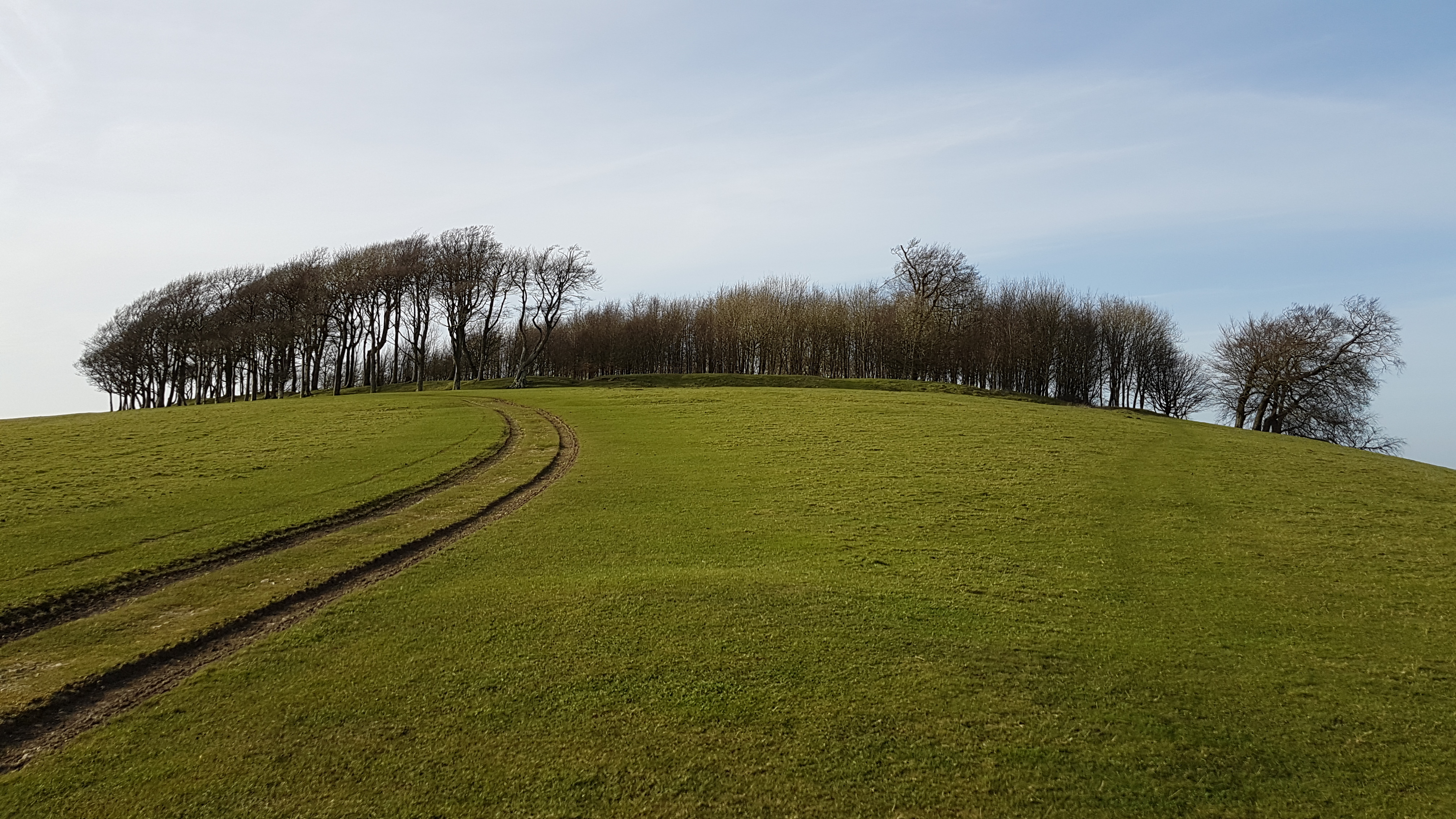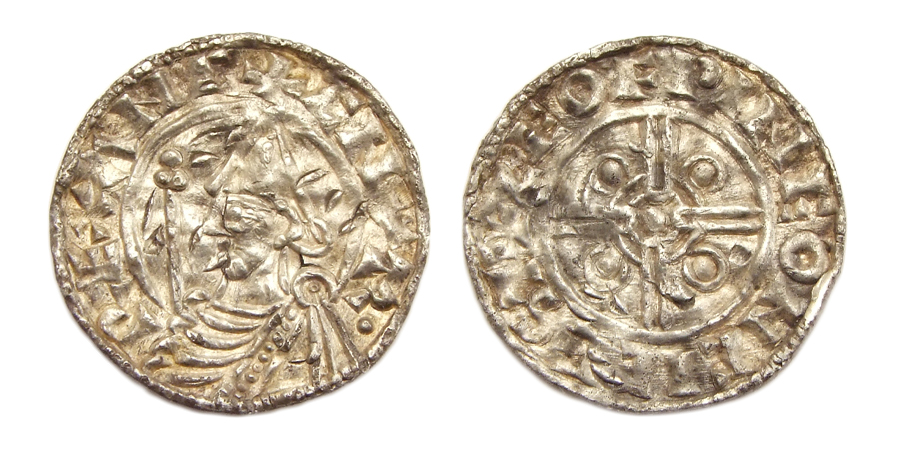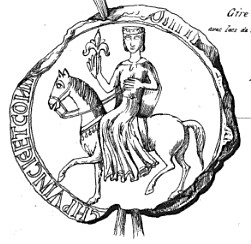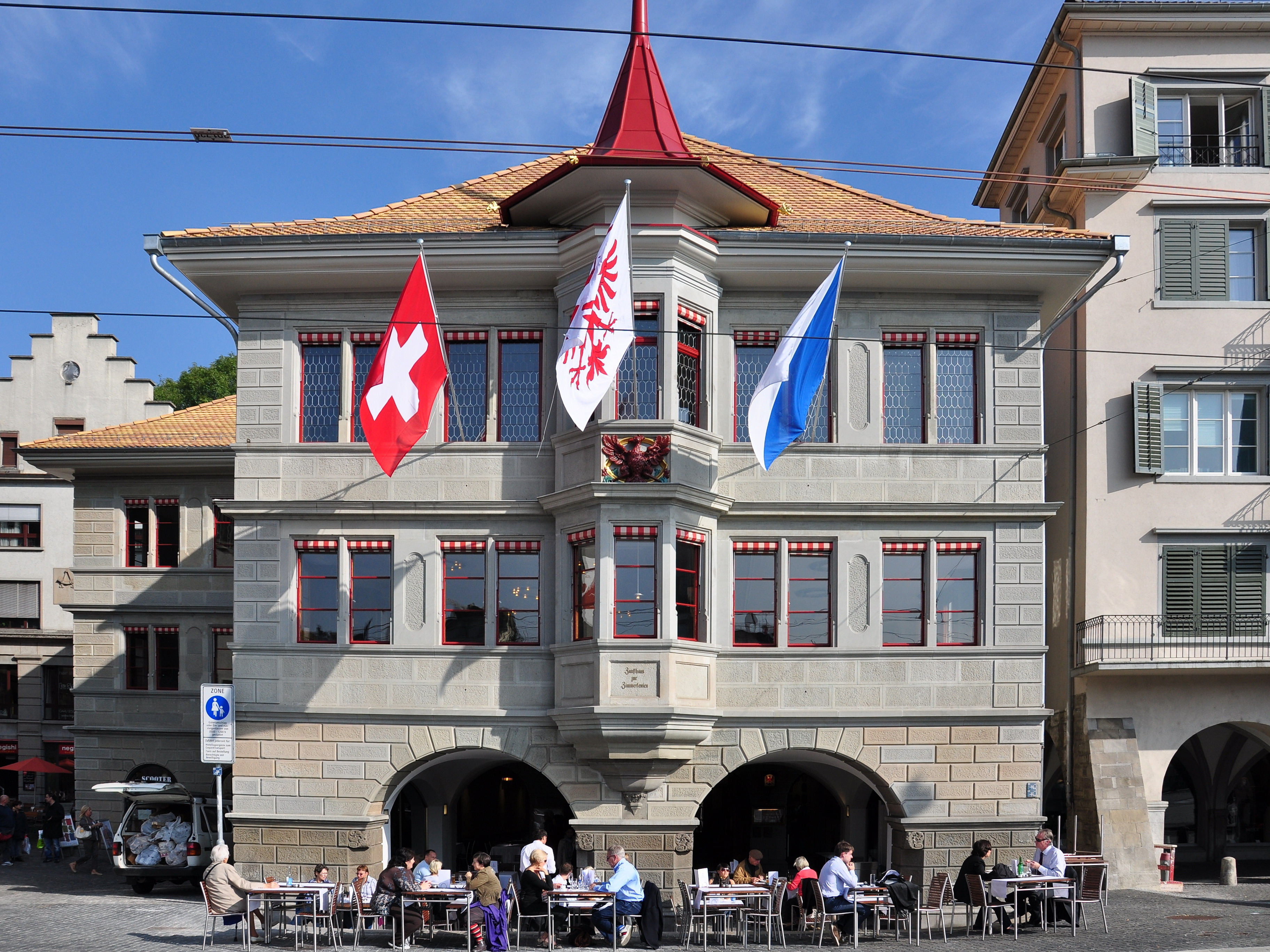|
Chichester Guildhall
Chichester Guildhall is a building in Chichester, West Sussex, England. The name is a bit of a misnomer, as the building was constructed as a chancel by the Grey Friars of Chichester, an Order of Franciscans. The Grey Friars received the land, now called Priory Park, in a grant from Richard, Earl of Cornwall, in 1269. It is a scheduled monument. The first record of The Guildhall in Priory Park talks of an ordination held by Archbishop John Peckham, in 1283. This date ties in with the architectural features of the Guildhall. The building is a magnificent example of late 13th-century architecture and is one of the few Franciscan Friaries in England that is still roofed. The building is an aisleless structure, with a height of . The western wall was a later addition, leading to the belief that some portion on the nave must have at least been begun. This modification to the building was executed so as to allow the chancel arch to remain visible spanning the whole width of the str ... [...More Info...] [...Related Items...] OR: [Wikipedia] [Google] [Baidu] |
Scheduled Monuments In West Sussex
There are 912 scheduled monuments in the county of West Sussex, England. These scheduled monument, protected sites date in some cases from the Neolithic period, and include Middle Ages, medieval moated sites, ruined abbeys, castles, and Iron Age hillforts. In the United Kingdom, the scheduling of monuments was first initiated to ensure the preservation of "nationally important" archaeological sites and historic buildings. Protection is given to scheduled monuments under the Ancient Monuments and Archaeological Areas Act 1979. Notable scheduled monuments in West Sussex ''This is a partial list of scheduled monuments in West Sussex''. See also *Grade I listed buildings in West Sussex *List of scheduled monuments, List of scheduled monuments in the United Kingdom References {{reflist Scheduled monuments in West Sussex Lists of scheduled monuments in England, West Sussex ... [...More Info...] [...Related Items...] OR: [Wikipedia] [Google] [Baidu] |
Chichester
Chichester ( ) is a City status in the United Kingdom, cathedral city and civil parish in the Chichester District, Chichester district of West Sussex, England.OS Explorer map 120: Chichester, South Harting and Selsey Scale: 1:25 000. Publisher:Ordnance Survey – Southampton B2 edition. Publishing Date:2009. It is the only city in West Sussex and is its county town. It was a Ancient Rome, Roman and Anglo-Saxon settlement and a major market town from those times through Norman dynasty, Norman and medieval times to the present day. It is the seat of the Church of England Diocese of Chichester and is home to a 12th-century cathedral. The city has two main watercourses: the Chichester Canal and the River Lavant, West Sussex, River Lavant. The Lavant, a Winterbourne (stream), winterbourne, runs to the south of the city walls; it is hidden mostly in culverts when close to the city centre. History Roman period There is no recorded evidence that Chichester was a settlement of any ... [...More Info...] [...Related Items...] OR: [Wikipedia] [Google] [Baidu] |
Chichester (district)
Chichester is a local government district in West Sussex, England. It is named after the city of Chichester, which is its largest settlement and where the council is based. The district includes the towns of Midhurst, Petworth and Selsey and surrounding rural areas, including many villages. The district includes part of the South Downs National Park, and Chichester Harbour is a designated Area of Outstanding Natural Beauty. At the 2021 census the district had a population of 124,531. The district is on the coast, facing the English Channel. The neighbouring districts are Arun, Horsham, Waverley, East Hampshire and Havant. History Chichester itself had been an ancient borough, which additionally held city status from 1075 when the Diocese of Chichester moved its seat from Selsey to Chichester. The modern district was formed on 1 April 1974 under the Local Government Act 1972 as one of seven districts within West Sussex. The new district covered the whole area of three ... [...More Info...] [...Related Items...] OR: [Wikipedia] [Google] [Baidu] |
Chancel
In church architecture, the chancel is the space around the altar, including the Choir (architecture), choir and the sanctuary (sometimes called the presbytery), at the liturgical east end of a traditional Christian church building. It may terminate in an apse. Overview The chancel is generally the area used by the clergy and choir during worship, while the congregation is in the nave. Direct access may be provided by a priest's door, usually on the south side of the church. This is one definition, sometimes called the "strict" one; in practice in churches where the eastern end contains other elements such as an ambulatory and side chapels, these are also often counted as part of the chancel, especially when discussing architecture. In smaller churches, where the altar is backed by the outside east wall and there is no distinct choir, the chancel and sanctuary may be the same area. In churches with a retroquire area behind the altar, this may only be included in the broader defi ... [...More Info...] [...Related Items...] OR: [Wikipedia] [Google] [Baidu] |
Franciscans
The Franciscans are a group of related organizations in the Catholic Church, founded or inspired by the Italian saint Francis of Assisi. They include three independent religious orders for men (the Order of Friars Minor being the largest contemporary male order), an order for nuns known as the Order of Saint Clare, and the Third Order of Saint Francis, a religious and secular group open to male and female members. Franciscans adhere to the teachings and spiritual disciplines of the founder and of his main associates and followers, such as Clare of Assisi, Anthony of Padua, and Elizabeth of Hungary. Several smaller Protestant Franciscan orders have been established since the late 19th century as well, particularly in the Lutheran and Anglican traditions. Certain Franciscan communities are ecumenical in nature, having members who belong to several Christian denominations. Francis began preaching around 1207 and traveled to Rome to seek approval from Pope Innocent I ... [...More Info...] [...Related Items...] OR: [Wikipedia] [Google] [Baidu] |
Priory Park, Chichester
Priory Park is a public park in Chichester, West Sussex, England, operated by Chichester District Council. It is situated in the north-east quadrant of Chichester City centre. The park is bordered by the medieval city walls to the north and east which are built upon the original Roman foundations. The park contains Chichester Castle and the Guildhall. History The poet and artist William Blake was tried in the guildhall located in the park The park has also played host to county cricket matches, holding its first first-class match in 1852 (before the park itself was established) when Sussex played an All-England Eleven. In 1882 and 1886 the touring Australians played on the ground, although Sussex were not their opponents: they played Lord March's XI (owner of the nearby Goodwood Estate) and against a United Eleven. It was in the Australians' match against the United Eleven that the great W.G. Grace played on the ground. Having last played on the ground in 1852, Sussex ... [...More Info...] [...Related Items...] OR: [Wikipedia] [Google] [Baidu] |
Richard, Earl Of Cornwall
Richard (5 January 1209 – 2 April 1272) was an English prince who was King of the Romans from 1257 until his death in 1272. He was the second son of John, King of England, and Isabella, Countess of Angoulême. Richard was nominal Count of Poitou from 1225 to 1243, and he also held the title Earl of Cornwall from 1225. He was one of the wealthiest men in Europe and joined the Barons' Crusade, where he achieved success as a negotiator for the release of prisoners and assisted with the building of the citadel in Ascalon. Biography Early life He was born 5 January 1209 at Winchester Castle, the second son of John, King of England, and Isabella, Countess of Angoulême. He was made High Sheriff of Berkshire at age eight, was styled Count of Poitou from 1225 and in the same year, at the age of sixteen, his brother King Henry III gave him Cornwall as a birthday present, making him High Sheriff of Cornwall. Richard's revenues from Cornwall helped make him one of the wealthies ... [...More Info...] [...Related Items...] OR: [Wikipedia] [Google] [Baidu] |
Scheduled Monument
In the United Kingdom, a scheduled monument is a nationally important archaeological site or historic building, given protection against unauthorised change. The various pieces of legislation that legally protect heritage assets from damage, visual disturbance, and destruction are grouped under the term "Designation (heritage assets), designation". The protection provided to scheduled monuments is given under the Ancient Monuments and Archaeological Areas Act 1979, which is a different law from that used for listed buildings (which fall within the town and country planning system). A heritage asset is a part of the historic environment that is valued because of its historic, archaeological, architectural or artistic interest. Only some of these are judged to be important enough to have extra legal protection through designation. There are about 20,000 scheduled monuments in England representing about 37,000 heritage assets. Of the tens of thousands of scheduled monuments in the UK ... [...More Info...] [...Related Items...] OR: [Wikipedia] [Google] [Baidu] |
English Heritage
English Heritage (officially the English Heritage Trust) is a charity that manages over 400 historic monuments, buildings and places. These include prehistoric sites, a battlefield, medieval castles, Roman forts, historic industrial sites, Listed building, listed ruins, and architecturally notable English country houses. The charity states that it uses these properties to "bring the story of England to life for over 10 million people each year". Within its portfolio are Stonehenge, Dover Castle, Tintagel Castle, and the "best-preserved" parts of Hadrian's Wall. English Heritage also manages the London blue plaque scheme, which links influential historical figures to particular buildings. When originally formed in 1983, English Heritage was the operating name of an executive non-departmental public body of the Her Majesty's Government, British Government, officially titled the Historic Buildings and Monuments Commission for England, that ran the national system of heritage prot ... [...More Info...] [...Related Items...] OR: [Wikipedia] [Google] [Baidu] |
John Peckham
John Peckham (c. 1230 – 8 December 1292) was a Franciscan friar and Archbishop of Canterbury in the years 1279–1292. Peckham studied at the University of Paris under Bonaventure, where he later taught theology and became known as a conservative opponent of Thomas Aquinas, especially regarding the nature of the soul. Peckham also studied optics and astronomy - his studies in those subjects were particularly influenced by Roger Bacon and Alhazen. Around 1270, Peckham returned to England, where he taught at the University of Oxford, and was elected the Franciscans' provincial minister of England in 1275. After a brief stint in Rome, he was appointed Archbishop of Canterbury in 1279. His time as archbishop was marked by efforts to improve discipline in the clergy as well as reorganize the estates of his see. He served King Edward I of England in Wales. As archbishop, Peckham oversaw attempts to close down Jewish synagogues, punish relapsing Jews from "returning to their vo ... [...More Info...] [...Related Items...] OR: [Wikipedia] [Google] [Baidu] |
Guild
A guild ( ) is an association of artisans and merchants who oversee the practice of their craft/trade in a particular territory. The earliest types of guild formed as organizations of tradespeople belonging to a professional association. They sometimes depended on grants of letters patent from a monarch or other ruler to enforce the flow of trade to their self-employed members, and to retain ownership of tools and the supply of materials, but most were regulated by the local government. Guild members found guilty of cheating the public would be fined or banned from the guild. A lasting legacy of traditional guilds are the guildhalls constructed and used as guild meeting-places. Typically the key "privilege" was that only guild members were allowed to sell their goods or practice their skill within the city. There might be controls on minimum or maximum prices, hours of trading, numbers of apprentices, and many other things. Critics argued that these rules reduced Free market, fre ... [...More Info...] [...Related Items...] OR: [Wikipedia] [Google] [Baidu] |
Guildhall
A guildhall, also known as a guild hall or guild house, is a historical building originally used for tax collecting by municipalities or merchants in Europe, with many surviving today in Great Britain and the Low Countries. These buildings commonly become town halls and in some cases museums while retaining their original names. As town hall in the United Kingdom In the United Kingdom, a guildhall is usually a town hall: in the vast majority of cases, the guildhalls have never served as the meeting place of any specific guild. A suggested etymology is from the Anglo Saxon "''gild'', or "payment"; the guildhall being where citizens came to pay their rates. The London Guildhall was established around 1120. For the Scottish municipal equivalent see tolbooth. List of guildhalls in the United Kingdom *Andover Guildhall *Guildhall, Barnstaple, Barnstaple Guildhall *Guildhall, Bath, Bath Guildhall *Beverley Guildhall *Bewdley Guildhall *Blakeney Guildhall *Bodmin Guildhall *Boston Gu ... [...More Info...] [...Related Items...] OR: [Wikipedia] [Google] [Baidu] |







